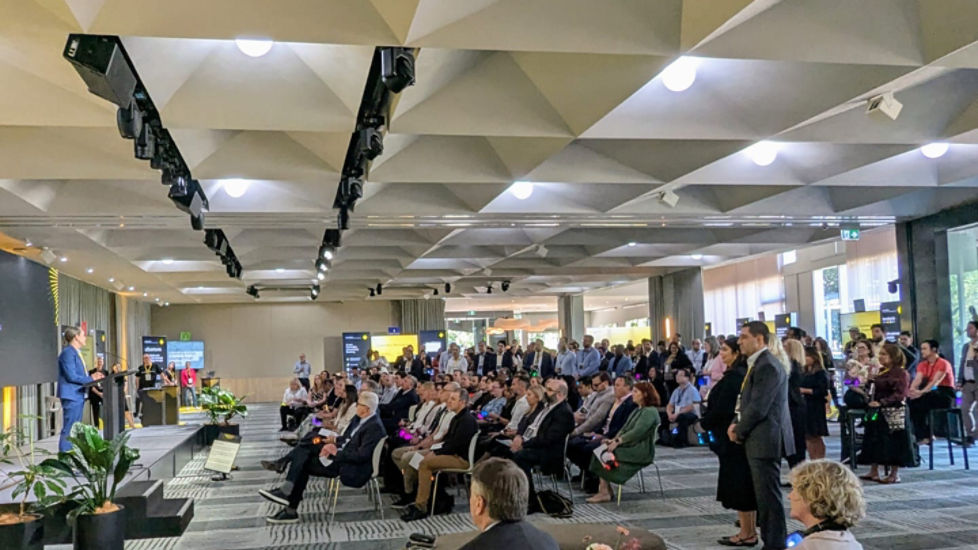For Australia’s general practices, the recovery in patient numbers following the height of the pandemic is stepping up as the cost and capacity to deliver care have come under pressure.
“As 91% of general practices forecast the same or higher patient number in the year ahead, 72% say staff shortages are holding back capacity and growth. If you add in rising operating costs for most practices, many are looking for ways to do more with less,” said Albert Naffah, CEO CommBank Health, Commonwealth Bank of Australia.
91% of general practices forecast the same or higher patient number in the year ahead.
This is one finding in CommBank’s latest GP Insights Report, which examines emerging operational and financial trends across the industry, practices’ digital transformation and rapidly changing patient preferences.
Sustainability and growth
The Report confirms that practices’ performance and outlook directly reflect the industry’s top challenges. These are also the forces prompting action as practices prioritise initiatives to manage costs, staff shortages and ease roadblocks to accessible and convenient care. This includes a focus on:
- Sustainable billing models – reviewing billing modes is a priority for most practices. This includes moving to mixed billing, increasing privately billed fees and using variable structures. Practices say many patients understand it’s necessary, but education and navigating the change remain challenging.
- People and culture – increasing the number of healthcare professionals to meet rising patient demand will help manage workloads and well-being. Increasing employee engagement and fostering a supportive and flexible workplace is the most common initiative to achieve it.
- Enhancing practice and patient experience – two-thirds of practices plan to increase technology investment. The fastest areas of adoption relate to digital solutions that can drive patient convenience, efficiency gains and better patient care.
Reviewing billing methods
With a broad acknowledgement that the Medicare rebate lags practices' running costs among 69% of practices, most are reducing the proportion of bulk billed consultations. Others are increasing privately billed fees and offering variable billing structures.
Director of Ausdocs Holdings Group, which operates 11 practices, Dr Ali Issapour, commented that “currently, the Medicare Benefits System doesn't consider the business side of general practice.
“It still operates under the assumption that a $40 charge for 10 minutes of a doctor's time means a doctor has to see six patients an hour, which isn’t realistic or designed to produce the best health outcomes,” Dr Issapour said.
The flow-on effect of billing model changes is reaching patients and practices differently, says Naffah. "Some patients may find it harder to make an appointment at a bulk billing practice.
“However, practices that have changed their billing model report more satisfied GPs, staff, and higher revenues, which in the long run are vital to meeting the ongoing primary care health needs of communities," Naffah said.
Expanding practice capacity
62% of practices say nurturing a friendly and supportive workplace is the top method to differentiate the practice when attracting and retaining talent.
Across the industry, providing flexible working, offering higher remuneration, team-building initiatives and social events are the most common ways to attract and retain staff. There is also a greater focus on competitive remuneration and professional development for regional practices that rely more on international doctors and medical students.
Townsville and Suburban Medical Practice (TSMP) owner Dr Peter Gianoulis says the practice has brought on board at least one doctor a year over the last five years and hasn't lost any. That's a success rate that the TSMP team aims to keep striving for over time.
"The clinic has started switching to a coaching model for its doctors as well," he says. "We touch base with them periodically to ensure they get the support they need for their personal and educational growth. We want them to feel fulfilled in work," Dr Gianoulis said.
Enhancing the practice and patient experience
The fastest growing areas of digital adoption centre on patient convenience and care and data analytics to track practice performance.
Investment in digital capabilities has also helped to ease the pressure off general practice staff and deliver a better patient experience. For example, patients were positive about online booking services, with eight in 10 claiming it enhances their overall experience.
Among practices’ top technology areas of adoption for the next two years are digital solutions that drive efficiencies and productivity, which would benefit the practices and patients.
Kim Ching, one of the founders of Northeast General Practice Services, says it’s essential to use technology to help deliver patient services and streamline or automate back office andcompliance functions.
“We utilise technology solutions that extract data to drive projects, or that can improve the quality of the clinics,” she says. “Digital solutions to help us better manage item numbers and service delivery models can ensure patients are well looked after and help doctors improve their billings.”
Read the report for more insights.
About the 2023 CommBank GP Insights Report
The 2023 CommBank GP Insights Report is based on a quantitative survey of 204 decision-makers and influencers at general practices across Australia and 1,020 patients who had consulted a practice within three months of completing the study. The practice survey was conducted by a mix of practising physicians, business owners and senior decision-makers, with 75% located in capital cities and 25% in other regions. ACA Research conducted the general practice and patient surveys on behalf of CommBank Health in October 2022. The surveys were designed to track perspectives on topical issues and practice priorities. All references to patients and general practices in this report refer to those participating in the surveys unless stated otherwise.




